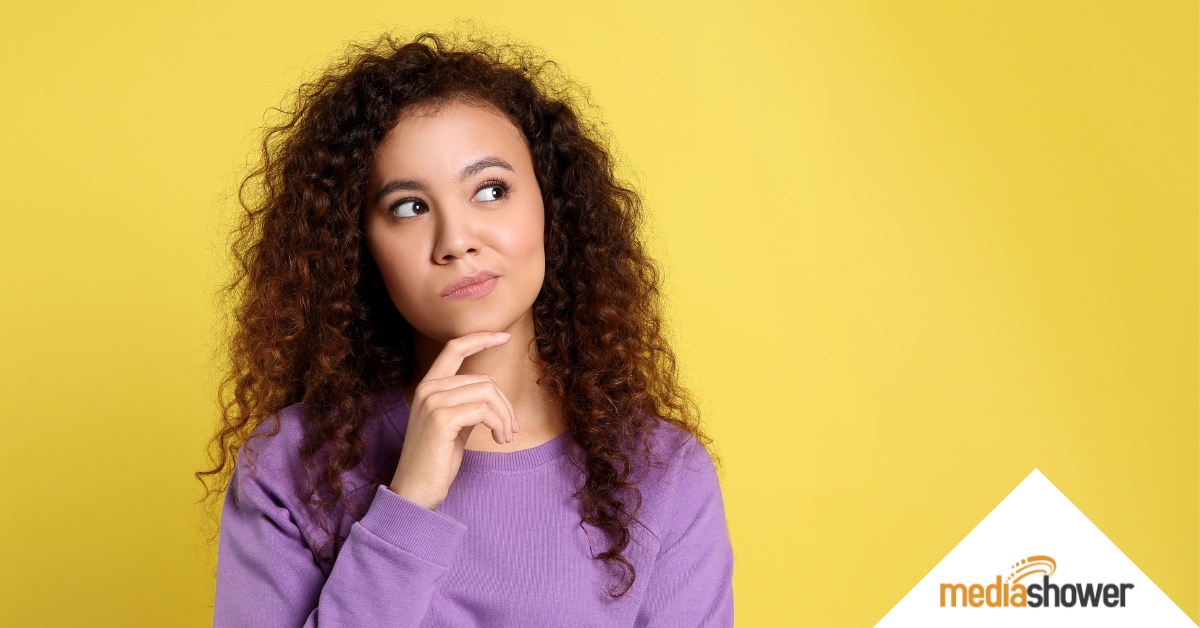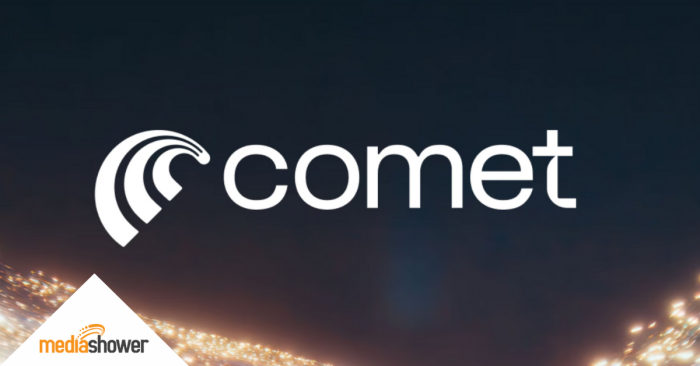
Marketers, take note: Google’s Nano Banana is a creative accelerator. Instead of spending hours in Adobe Photoshop, creating and retouching images, this AI tool will make the edits with just a few plain-English commands like “Create this image” or “Edit this out.”
Officially known as the Gemini Flash 2.5 image model, Nano Banana can also transform how your team creates branded visuals, slashing turnaround times while keeping your brand identity razor-sharp.
From campaign mockups to photo filtering and effects, this tool is already making waves with in-house marketers, solo creators, and enterprise teams. Here’s how to make it work for you, with prompt templates, example results, and real-world applications.
How Do You Access Nano Banana?
Access it directly through Gemini. When you enter an image-related prompt, Gemini automatically selects between Imagen (for generation) and Nano Banana (for editing).
Quick Marketing Wins
Nano Banana handles everyday marketing tasks with simple prompts: fast, clean, and surprisingly polished.
A few examples include:
- Removing backgrounds. Instantly isolate products or people for versatile use across channels.
- Changing the color of an item. Test brand palettes, seasonal variants, or product mockups in seconds.
- Removing people or objects. Clean up visuals or refocus attention without extra editing tools.
- Merging people or objects. Combine multiple images into one.
Watch the short video below to see these basics and more in action.
These quick wins show how Nano Banana handles everyday tasks with ease. But if you want your visuals to look polished and repeatable—not just impressive one-offs—there’s one technique that will make all the difference.
The Best Way to Get Consistent Results
If you want the best results from Nano Banana, start with a reference image. Think of it as your visual anchor—style, layout, subject, or color palette.
Why it works
Nano Banana uses uploaded visuals to lock in style, proportions, and design intent, giving you far more control over the output than prompts alone.
How to use a reference image
- Style match. Upload a photo or brand visual and prompt: “Match this visual style.”
- Aspect ratio control. Upload a blank template in your desired size (e.g., Facebook ad dimensions) as the last image in the stack. Nano Banana will often adopt that format. (More on this later.)
- Visual consistency. Upload the same subject or product repeatedly across prompts to maintain consistency in look, angle, and lighting.
Pro tip: Build a quick-reference folder of style, layout, and blank templates (like “LinkedIn square,” “Pinterest tall,” or “Tech brand vibe”) to streamline your workflow.
Top B2B Use Cases for Nano Banana
We’ve found many ways to use Nano Banana’s image generation and editing capabilities for marketing tasks. Here are a few of our faves.
Create Stunning Product Shots
Nano Banana can help you generate photorealistic visuals of products from prompts.
Prompt: Create a sleek shot of our coffee bag styled like a luxury good. [Upload a photo of your product.]
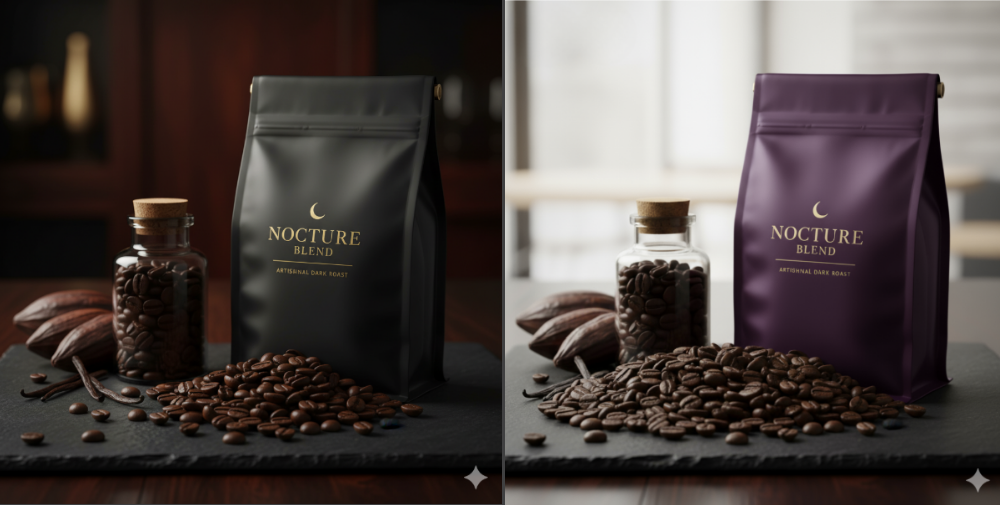
Follow-up Prompt: Change the color of the bag to purple and lighten the background.
Use case: Generate production-ready shots for social, website, or ads—without a photo shoot.
Place your product in lifestyle scenes
Combine screenshots with lifestyle environments for grounded, authentic use.
Prompt: A woman working on a laptop in a coworking space with a computer screen facing the camera.

Follow-up Prompt: Add this screenshot to the computer. [Upload a screen shot of your UI.]
Use case: Show your product in use to support case studies, social content, or landing pages.
Design Branded Merch and Event Swag
Visualize merch before manufacturing. Generate product shots for ideation, A/B testing, or internal approvals.
Prompt: Show my logo on a hoodie in a candid shot of a male model and on a mug in a woman’s hand. (Upload your logo image)
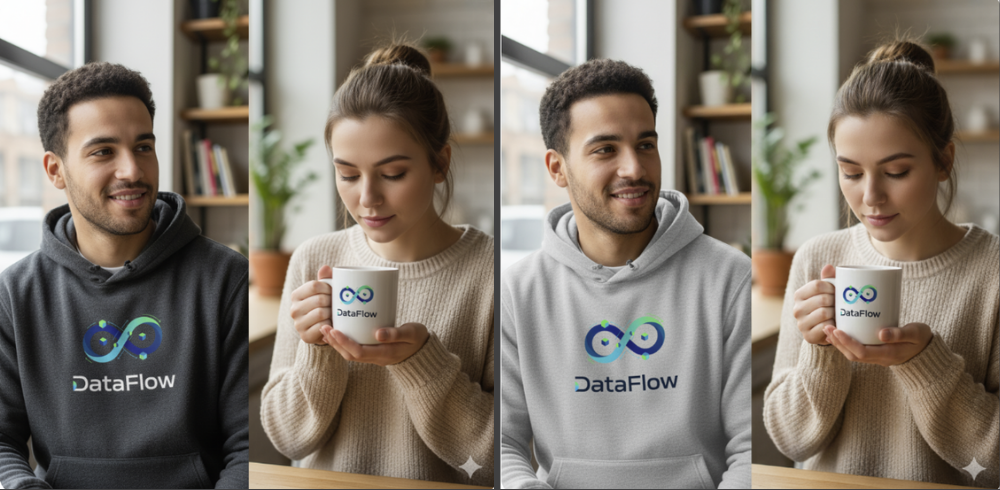
Follow-up prompt: Change the hoodie to light gray.
Note that Nano Banana automatically adjusted logo colors for visibility (e.g., white on dark hoodie, black on white mug).
Use case: Plan your next trade show look without hiring a photographer.
Multiple Angles/Perspectives
Prompt series: Create a marketing flyer showing this running shoe from four angles.
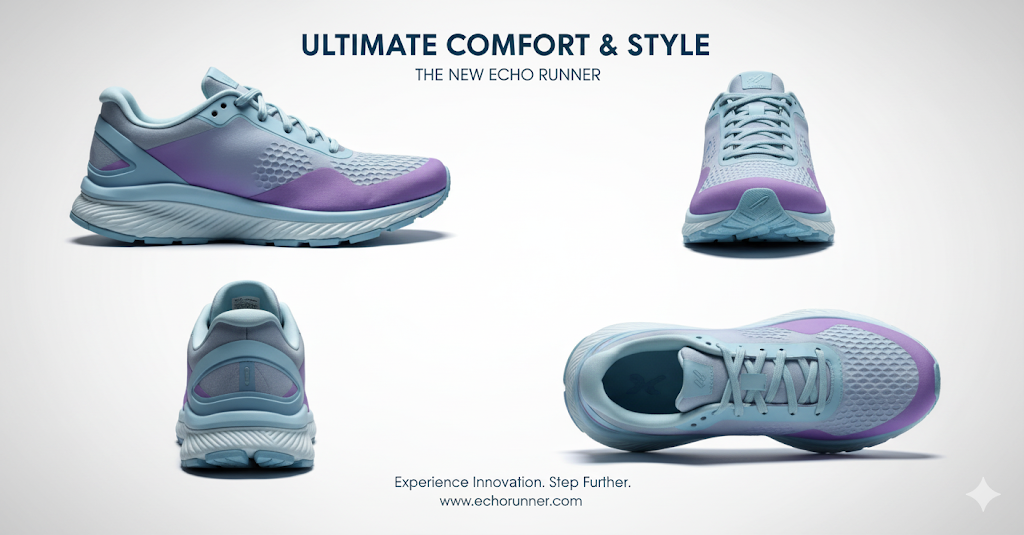
Use case: Replace expensive multi-angle shoots with AI-generated visuals.
Before-and-After Scenarios
Use visual transformation storytelling to illustrate value.
Prompt 1 (Before): A stressed logistics worker surrounded by monitors, looking overwhelmed.

Prompt 2: The same worker after he installed state-of-the-art logistics software.
Use case: Communicate product value visually with transformation narratives.
Merging Multiple Images

Prompt: Put these two people in the same image. Show them interacting at a cafe table.

Use case: Quickly composite people or products into a shared context.
Adjust Actions and Poses
Modify an “almost-there” stock image to create one that’s exactly right.

Prompt: Change the man on the left to a middle-aged woman with dark hair. The people are looking at each other, not at the camera.
Use case: Modify near-miss stock photos to match your messaging without a reshoot.
Influencer Lifestyle Photos
Prompt: Place this outfit on a 20-year-old college student.

Follow-up prompt: Place her on a college campus, mingling and chatting with a small group of students.

Use case: Generate lifestyle content that matches your target audience.
Design Your Interior Space
Prompt: Design a modern office space with colors from this mood board.
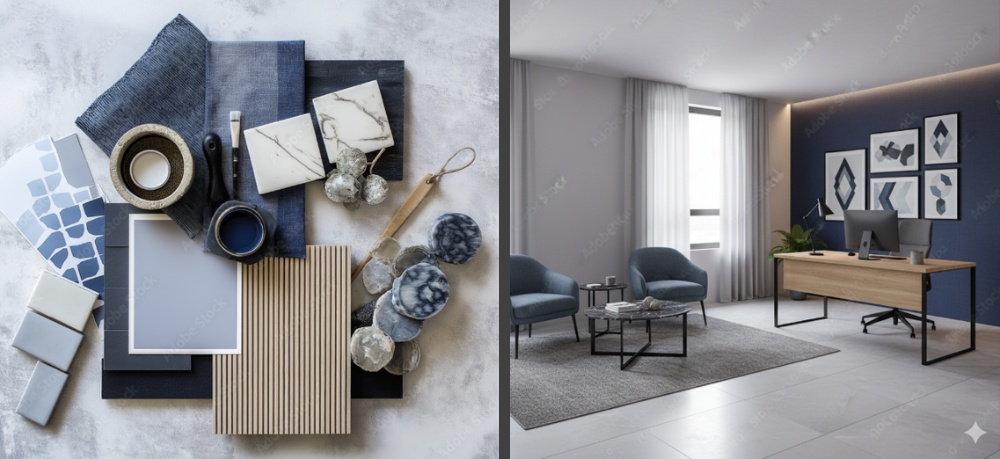
Use case: Ideate workplace concepts or B2B environments for marketing materials.
Create Customer Personas
Give your customer personas life with detailed prompts: a male digital nomad and a woman who works from home.
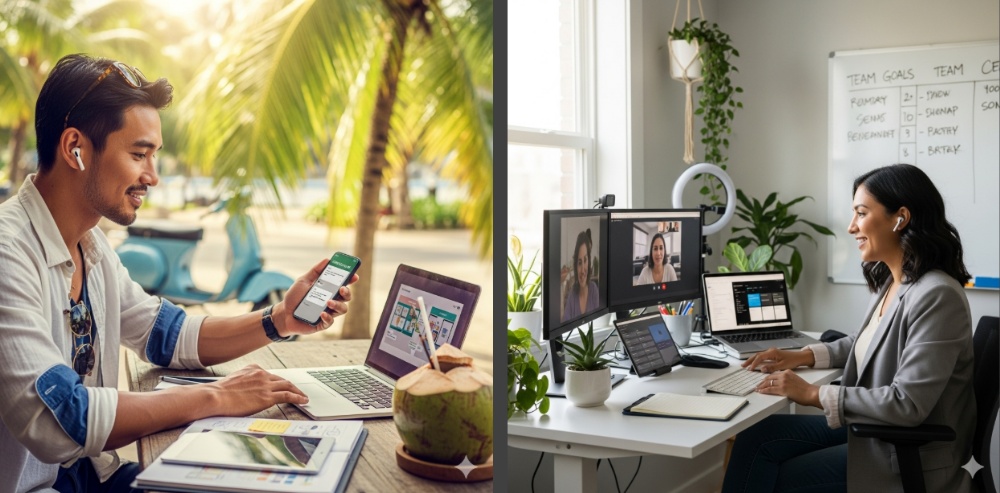
Use case: Add realism to personas for internal strategy decks or campaign planning.
Change Perspective
Prompt: Flip these phones over.
![]()
Not perfect, but impressive just the same.
Use case: Highlight different product angles or states.
Create and Apply Mood Boards
This is great for companies that are rebranding, or marketers who need to use different brand colors for multiple clients.
If you’re starting from scratch, first find a reference photo that has the color story you’re looking for. Then, ask Flash to create a mood board that everyone on your team can use as a branding guide.
You can also simply ask the AI to use the colors in your reference photo and skip the mood board, but it may give you less control.
Reference photo and mood board:

Prompt: Create a mood board using 3 primary colors and 2 accent colors from this photo.
Use your mood board to get images for digital use or print assets in brand-friendly colors.
Create Blog Posts from Your Mood Board
Upload your mood board to generate an image from scratch, or edit a reference photo to change the colors.
Prompt: Using colors from my mood board, create an image of a female treating a male patient who is lying face-down on a chiropractic table. There is a spinal nerve chart on the wall. The chiropractor is wearing a cream-colored polo shirt. [Upload your mood board]

Use case: Guide brand visuals with color-consistent imagery across campaigns.
Create branded assets
Prompt: Create a logo for a consulting company based on this palette.
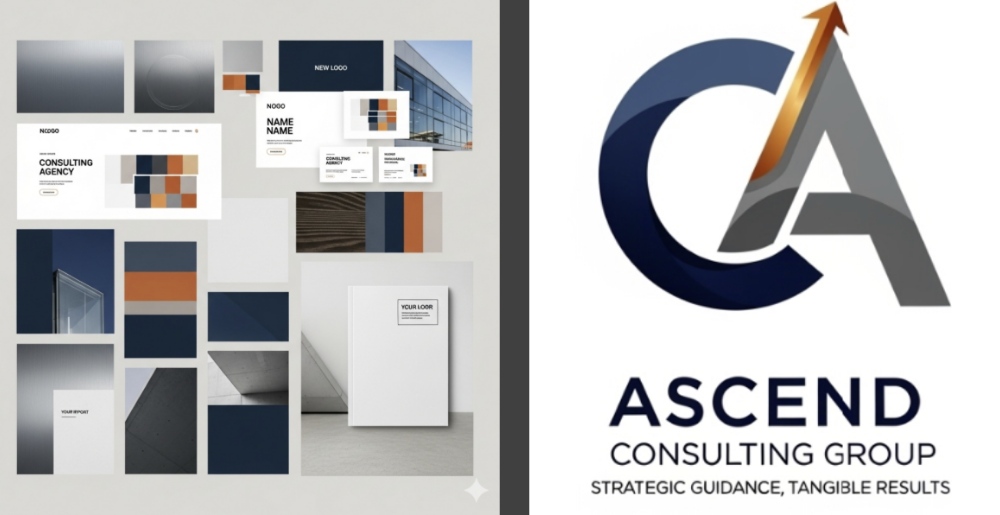
Follow-up prompt: Create a landing page for this consulting company using the same palette.
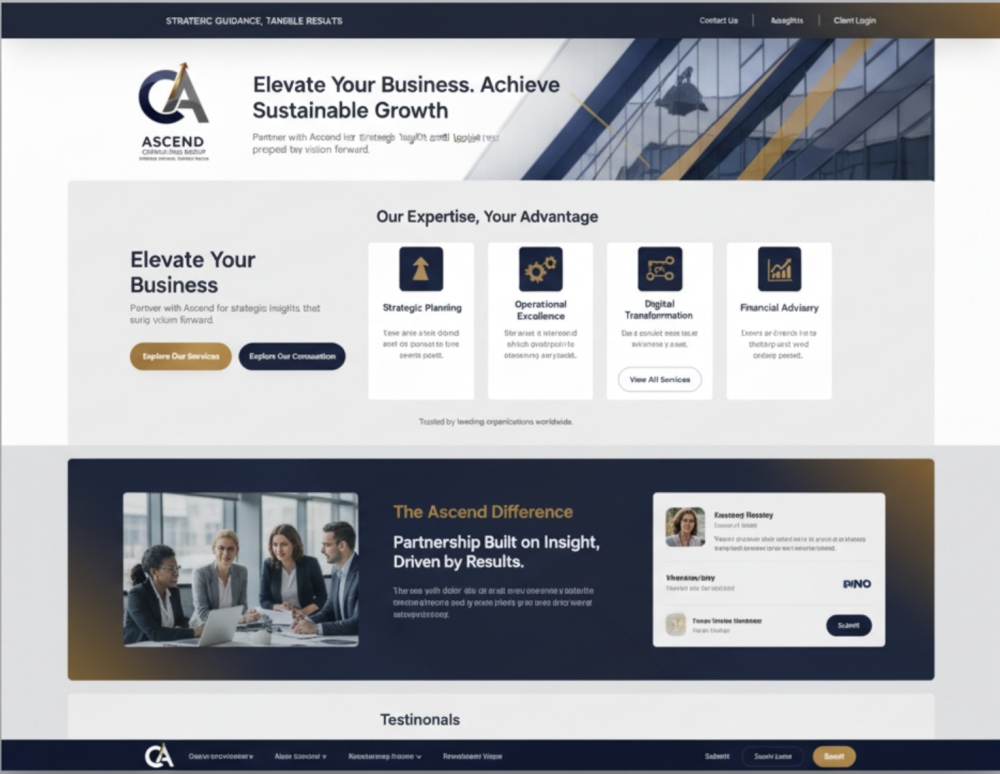
Use case: Align branding assets across formats fast.
Conceptualizing an Abstract Concept
B2B themes like “transformation” or “growth” are hard to visualize. Turn metaphors into visuals using Nano Banana’s prompt-based generation.
Prompt: Please create a business-themed abstract illustration: a glowing bar chart transforming into a city skyline, modern and professional.

Result: A clean, business-friendly visual metaphor—perfect for keynote decks or landing pages. Add text placeholders, and you have a presentation title page template.
Use case: Translate hard-to-visualize ideas into business-friendly images.
Create Seasonal Variants of Campaign Assets
Prompt: Change this to a fall scene and dress the models appropriately. Show them talking and laughing.

Use case: Create versions of outdoor campaign assets to use year round.
Transform Sketches into Production-Ready Visuals
This skill is great for blueprints, product napkin sketches, or anything else you can think of. Just upload a sketch and let Nano Banana fill in the blanks.
Prompt: Bring this sketch to life.

Use case: Move from idea to asset instantly—great for early-stage concepts or product dev.
Advanced Prompting for Nano Banana
We’ve purposely kept things simple for this guide for ease of demonstration. In reality, the more detailed your prompts, the better your results will be.
But you don’t need a design background or deep knowledge of art styles to get great images.
You can lean on a tool you probably already know how to use.
Use ChatGPT to reverse engineer prompts
Upload a reference image and ask Chat to generate a detailed prompt in the style you want. It will help reverse engineer visuals—perfect for flat vectors, brand styles, or metaphor-based images.
Just load your reference image into Chat. Add any changes you want (two people instead of three, brand colors, graphic elements, etc.) and ask Chat to write a prompt to create the image.
Sample ChatGPT prompt: Create a flat vector illustration in a clean, modern style for a fintech company. Three professionals (two men and one woman) discuss financial growth. One points to a large clipboard with a rising arrow over a bar chart. Include fintech icons like digital graphs, dollar signs, and calculators. Color palette: brick red, beige, white, grayscale. Style: uncluttered, flat fills, soft edges.
Plug this prompt into Nano Banana to create your graphic.

Create custom GPT assistants
If Nano Banana plays a regular role in your creative or marketing workflow and you find yourself repeating similar prompt types, consider building a custom GPT in ChatGPT (it’s easy!) to handle the prompting.
You’ll save time, reduce trial and error, and get better, more consistent results with far less friction.
Here’s an example.
Social Media Image Prompt Assistant
Purpose: Quickly generate optimized prompts for different platform dimensions and tones.
What it does:
- Lets you choose a platform (e.g., Facebook, Instagram, LinkedIn, Pinterest).
- Auto-generates prompts tailored to the right aspect ratio, style, and audience tone.
- Includes reminders like: “Upload your blank reference image last to lock in the aspect ratio.”
Customize your GPT by uploading brand colors, sample graphics, etc., so your prompts will always be on brand.
To use, simply tell your GPT what you want to create, and it will provide clear,
Example output:
“Create a bright, engaging lifestyle image of a woman sipping tea on a balcony, golden-hour lighting, soft shadows, natural tones. Style: minimalistic, warm, inviting. Intended for a 1200×628 Facebook ad. Add ‘Facebook blank’ reference image last.”
Upload the prompt into Nano Banana, and you’ll have less iteration to do. Bonus: You train your GPT to output copy for your social channels at the same time.

Nano Banana vs Google’s AI Studio
For even more control over your images, you can access a more robust version of 2.5 Flash through Google AI Studio.
Choose Nano Banana when:
- You need speed and flexibility
- You’re prototyping or brainstorming
- You want looser, more creative outputs
Choose AI Studio when:
- You need high resolution or cleaner detail
- You’re producing client-facing visuals
- You need better aspect ratio control
More Marketing Use Cases
Beyond product shots and campaign visuals, Nano Banana can accelerate many core marketing workflows:
- Sales deck visuals. Generate clean, professional graphics that illustrate business concepts—ideal for pitch decks and executive presentations.
- Case study illustrations. Create before-and-after scenes, process visuals, or customer persona images that make stories more engaging.
- Whitepaper and eBook graphics. Turn abstract concepts like “digital transformation” or “workflow automation” into sharp, branded visuals.
- Email header graphics. Quickly design contextual banners in the right aspect ratio for nurture campaigns and newsletters.
- Event marketing assets. Mock up trade show booths, banners, signage, or branded swag for pre-event planning and promotion.
- Social campaign variations. Adapt one concept into multiple formats—LinkedIn post banners, paid ad creatives, or carousel panels—while keeping colors and style consistent.
- Persona-driven imagery. Tailor visuals to different industries or buyer types (e.g., IT decision-makers vs. healthcare administrators) for ABM campaigns.
Nano Banana can drive full campaign ecosystems so your team can produce tailored, channel-specific visuals faster with less cost than traditional workflows.
What Makes Nano Banana Different?
Here’s why Nano Banana lives up to its hype.
It’s fast
Nano Banana delivers visuals in seconds, not minutes. In our tests, most images took 20–30 seconds to generate, and some even faster. That means you can iterate quickly without breaking your creative flow.
It’s consistent
Nano Banana excels at character and object consistency across image variations. Unlike most AI image tools, it can retain the same scene, character, or product across versions, which is important for scaling branded campaigns.
It’s marketer-friendly
Whether you’re creating mockups or building final campaign assets, Nano Banana’s ease of use makes it a favorite among marketers moving fast and staying on brand.
It’s ideal for marketers who want to scale content fast while keeping control of the creative direction.
Limitations of Nano Banana
Like all AI tools still in their infancy, Nano Banana is not perfect. Here are some of the issues we’ve found.
Follow-up prompts can get lost
Nano Banana isn’t as good with iteration as platforms like ChatGPT, Claude, or even Gemini itself. It often forgets previous context. To work around it, upload the previous image with every prompt, or start a new chat using the saved image.
Aspect ratios are tricky
Use a blank image in your desired aspect ratio and upload it last. Canva is perfect for creating reusable templates like “LinkedIn tall” or “Pinterest square.” Keep your templates handy to use whenever you need them.
Text is hit-or-miss
Text is getting better with Nano Banana, but it doesn’t always render cleanly, particularly if there is a lot of it. You may need to finish the visual in Canva or Photoshop.
Watermarks
All images generated by Nano Banana carry a watermark in the lower right corner. Gemini has also added an invisible watermark that will identify the image as AI-generated, even if you remove the visible watermark with photo editing tools.
Pro Tips for Marketers
- Be precise in your prompts. Describe settings, lighting, product position, and desired aesthetic.
- Don’t rely on AI for text. Nano Banana is getting much better with text, but it still struggles with consistent lettering. Add text in Canva, Figma, or Photoshop.
- Use reference images for style matching. Grab visuals from Pinterest, stock photo sites, or past campaigns, then prompt: “Match this visual style.” Or ask ChatGPT to reverse engineer a detailed prompt.
- Keep it ethical. All outputs carry SynthID watermarks. Get consent before editing real people, and don’t fake UGC or testimonials.
- Think beyond single images. Use Nano Banana to generate kits, series, or variants that feed your full campaign ecosystem.
- Don’t like an image? Try your prompt again. You’ll get a different result every time.

Marketer Takeaways
- Use reference images as anchors. They improve consistency, control aspect ratios, and help you match brand style.
- Start with quick wins. Background removal, object edits, and color changes show immediate ROI for busy teams.
- Think in campaigns, not one-offs. Generate image kits, persona visuals, and variants to support full funnels.
- Prioritize precision in prompts. The more detail you include—lighting, setting, mood—the closer you get to usable results.
- Keep text external. Add copy in tools like Canva or Photoshop for reliable typography and clean design.
- Balance speed with polish. Use Nano Banana for rapid prototyping, then refine high-value assets in AI Studio or traditional design tools.
Media Shower’s AI marketing platform is so good, it’s bananas. Click here for a free trial.

